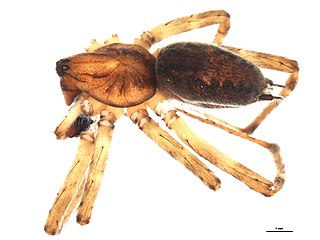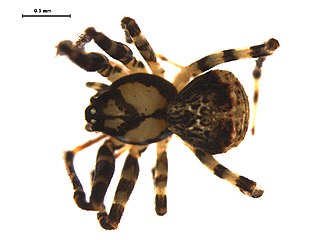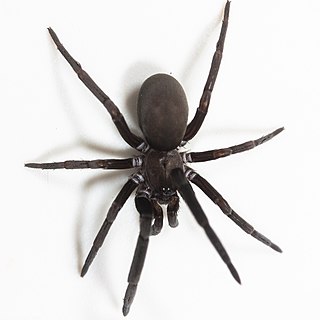 W
WAgelenopsis emertoni is a species of funnel weaver in the family of spiders known as Agelenidae. It is found in the United States. The spider was named to honour arachnologist James H. Emerton. A. emertoni is distinguished from other Agelenopsis species in the genus by the male's loosely coiling embolus making more than one full circle, and a claw-like conductor tip. These features are sclerites of the male sex organ which is used to inseminate the female. The female has a distinctive conducting tube in her genitalia. The male can be between 6 and 13mm. Distribution is in the following states of the USA: Arkansas, Colorado, Florida, Georgia, Louisiana, Massachusetts, Mississippi, Missouri, New Jersey, New York, North Carolina, Oklahoma, Pennsylvania, Tennessee, Texas, Virginia.
 W
WAgelenopsis oregonensis is a species of funnel weaver in the spider family Agelenidae. It is found in the United States and Canada.
 W
WAraneus gemmoides, commonly known as the jewel spider and cat-faced spider, is a common outdoor orb-weaver spider found in the USA and Canada. They are considered harmless and have low-toxicity venom. A. gemmoides are useful natural predators for insects.
 W
WCybaeopsis euopla is a species of hacklemesh weaver in the spider family Amaurobiidae. It is found in the United States and Canada.
 W
WEro canionis is a species of pirate spider in the family Mimetidae. It is found in the United States.
 W
WEustala rosae is a species of orb weaver in the spider family Araneidae. It is found in the United States and Mexico.
 W
WHyptiotes gertschi is a species of cribellate orb weaver in the spider family Uloboridae. It is found in the United States and Canada.
 W
WKukulcania geophila is a species of crevice weaver in the family of spiders known as Filistatidae. It is found in the United States and Mexico.
 W
WLatrodectus hesperus, the western black widow spider or western widow, is a venomous spider species found in western regions of North America. The female's body is 14–16 mm in length and is black, often with an hourglass-shaped red mark on the lower abdomen. This "hourglass" mark can be yellow, and on rare occasions, white. The male of the species is around half this length and generally a tan color with lighter striping on the abdomen. The population was previously described as a subspecies of Latrodectus mactans and it is closely related to the northern species Latrodectus variolus. The species, as with others of the genus, build irregular or "messy" webs: unlike the spiral webs or the tunnel-shaped webs of other spiders, the strands of a Latrodectus web have no apparent organization.
 W
WTrachelas pacificus is a species of true spider in the family Trachelidae. It is found in the United States and Mexico.